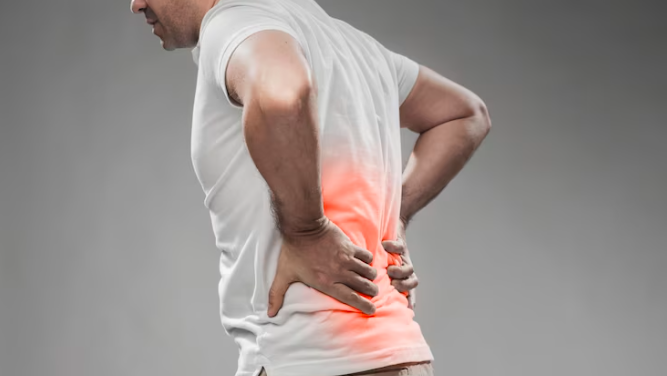BackPain

BackPain
Back pain is a prevalent condition affecting individuals across various age groups. Understanding its causes, recognizing symptoms, and exploring effective treatments is crucial for managing and alleviating this discomfort.
Causes of Back Pain
1. Muscle Strain: Overexertion, lifting heavy objects improperly, or sudden movements can strain the muscles and ligaments in the back.
2. Structural Issues: Conditions like herniated discs, bulging discs, or spinal abnormalities can contribute to back pain.
3. Arthritis: Osteoarthritis or inflammatory arthritis can affect the joints in the spine, causing pain and stiffness.
4. Poor Posture: Prolonged periods of sitting or standing with poor posture can strain the back muscles and lead to pain.
5. Trauma or Injury: Accidents, falls, or injuries, such as fractures or sprains, can result in acute or chronic back pain.
6. Nerve Compression: Conditions like sciatica, where the sciatic nerve is compressed, can cause radiating pain in the back.
7. Lifestyle Factors: Obesity, lack of exercise, and smoking can contribute to back pain.
Symptoms of Back Pain
1. **Localized Pain:** Discomfort or pain concentrated in the lower, middle, or upper back.
2. **Radiating Pain:** Pain that extends from the back to the buttocks and legs (sciatica) or to the shoulders and arms.
3. **Stiffness:** Limited flexibility and stiffness in the back, particularly after periods of inactivity.
4. **Muscle Spasms:** Involuntary contractions of back muscles leading to pain.
5. **Tingling or Numbness:** Sensations of tingling or numbness, especially if nerves are affected.
6. **Weakness:** Reduced strength or weakness in the back muscles.
Treatment for Back Pain
1. **Rest and Activity Modification:** Adequate rest combined with gradual resumption of activities to avoid prolonged inactivity.
2. **Physical Therapy:** Targeted exercises and stretches to strengthen the back muscles and improve flexibility.
3. **Pain Medications:** Over-the-counter pain relievers (NSAIDs) or prescription medications to manage pain and inflammation.
4. **Heat and Cold Therapy:** Application of heat or cold packs to alleviate muscle spasms and reduce inflammation.
5. **Ergonomic Adjustments:** Modifying workplace or home setups to ensure proper posture and reduce strain on the back.
6. **Weight Management:** Maintaining a healthy weight through proper diet and exercise to alleviate stress on the spine.
7. **Invasive Interventions:** In severe cases, procedures like epidural injections or surgery may be considered to address specific issues.
8. **Alternative Therapies:** Options such as acupuncture, chiropractic care, or massage therapy may offer relief for some individuals.
Conclusion
Understanding the diverse causes and symptoms of back pain is essential for tailoring effective treatment approaches. While many cases of back pain can be managed through conservative measures, seeking professional medical advice ensures a comprehensive evaluation and appropriate intervention. If you experience persistent or severe back pain, consult with healthcare experts to determine the most suitable course of action for your specific condition.

